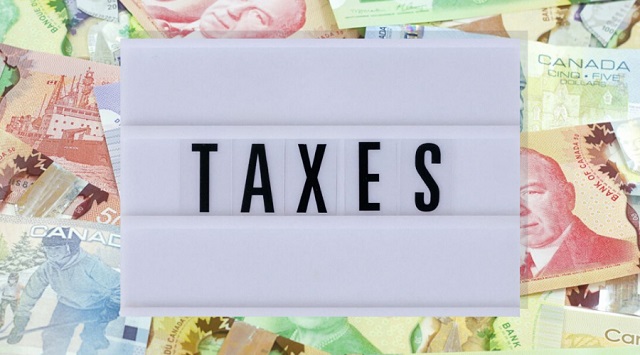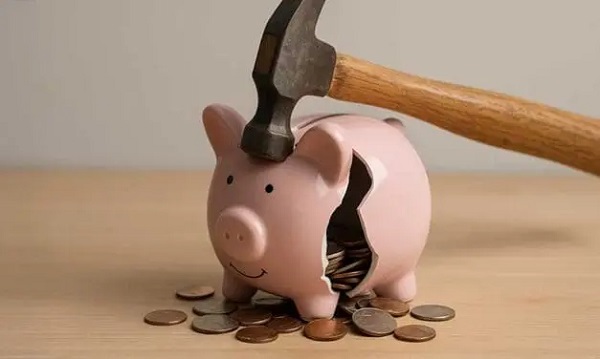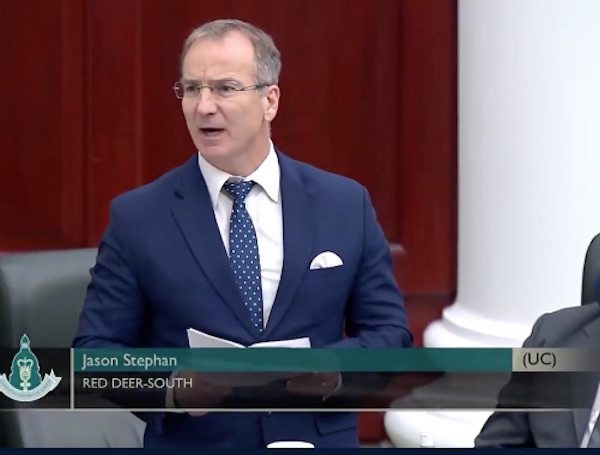Business
Trudeau hiking taxes again in 2024

From the Canadian Taxpayers Federation
Author: Franco Terrazzano
Brace for impact, taxpayers.
Prime Minister Justin Trudeau will be reaching deeper into your pockets in the new year with payroll tax hikes, a carbon tax hike and alcohol tax hikes.
Canadians will be paying higher payroll taxes because of the mandatory rising Canada Pension Plan and Employment Insurance contributions.
If you make $73,200 or more, you’ll be paying an extra $347 in payroll taxes in 2024, for a total tax bill of $5,104.
Your employer will also be forced to fork over $5,524 in the new year.
The federal government is imposing a new tax, which it calls “CPP2.” The original CPP taxes your income at six per cent up to $68,500. The new CPP2 expands that threshold and taxes additional income at four per cent up to $73,200.
Trudeau likes to claim he’s “working to make life more affordable.” But he’s also hiking a tax that directly makes life more expensive: the carbon tax.
The carbon tax increases the price of gasoline, diesel and home heating fuels, which is a big deal in our vast, cold country. The carbon tax also makes groceries more expensive, as it increases costs for the farmers who grow our food and the truckers who deliver it.
The carbon tax will cost the average family up to $911 in 2024 even after the rebates, according to the Parliamentary Budget Officer.
The feds are also scheming up a digital services tax. This new tax targets social media platforms, companies operating digital marketplaces, and businesses earning revenue from online advertising, such as Amazon, Google, Facebook, Uber and Airbnb.
Consumers should expect to pay higher prices because of the tax. When faced with the three per cent DST in France, Amazon increased its commission charge to French vendors by the same amount.
You could be forgiven if all these tax hikes drive you to drink.
But when you pick up that case of Blue, a bottle of pinot or a mickey of rum, Trudeau will be taking an extra 4.7 per cent from you through his alcohol tax hikes.
Next year’s federal alcohol tax hike is expected to cost taxpayers almost $100 million.
Taxes in Canada already account for about half of the price of beer, 65 per cent of the price of wine and more than three quarters of the price of spirits.
While Trudeau hikes taxes, many other countries are providing relief.
The Canadian Taxpayers Federation identified 51 national governments that provided tax relief during the pandemic or to ease the burdens of inflation. Those governments include more than half of the G7 and G20 countries and two-thirds of the countries in the Organization for Economic Co-operation and Development.
Provincial governments – of all political stripes – are also providing relief.
Manitoba’s NDP government is suspending its fuel tax in the new year. Gas tax relief from Ontario’s Progressive Conservatives will save a family with a minivan and pick-up truck about $185 through June 2024. And the Liberals in Newfoundland and Labrador cut their gas tax by eight cents per litre.
The Alberta government promised to cut personal income taxes and passed legislation requiring a vote before a government can increase income or business taxes. Manitoba’s income tax cuts could save an individual taxpayer more than $2,000. Quebec lowered its income tax rate on the first two brackets. New Brunswick implemented significant income tax relief in 2023. And Prince Edward Island’s income tax cut will save middle-class taxpayers up to $200.
The fastest, simplest and easiest way for Trudeau to make all areas of life more affordable is to ditch his high-tax policies and allow Canadians to keep more of our money.
Business
Man overboard as HMCS Carney lists to the right

Steven Guilbeault, Heritage Minister and Quebec lieutenant, leaves cabinet this week with his chief of staff, Ann-Clara Vaillancourt. He resigned on Thursday.
Steven Guilbeault’s resignation will help end a decade of stagnation and lost investment.
Steven Guilbeault’s resignation will come as no surprise to Mark Carney – save, perhaps, for the fact that it took so long.
The former environment minister quit on Thursday evening, after the prime minister unveiled his memorandum of understanding with Alberta premier, Danielle Smith. That deal is aimed at creating the conditions to build an oil pipeline to the West Coast and encouraging new investment in the province’s natural gas electricity generation sector. In doing so, Carney cancelled the oil and gas emissions cap and the clean electricity regulations that Guilbeault had been instrumental in constructing and imposing.
Fly Straight is a reader-supported publication.
To receive new posts and support my work, consider becoming a free or paid subscriber.
The former environmental activist couldn’t accept the continued expansion of fossil fuel production and so walked away after six years in cabinet.
In his resignation statement, he said he strongly opposes the MOU with Alberta because it was signed without consultation with the province of British Columbia and First Nations.
He said removing the moratorium on oil tankers off the West Coast would increase the risk of accidents and suspending clean electricity regulations, which blocked new gas generation, will result in an “upwards emissions trajectory”.
In particular, he was upset about the expansion of federal tax credits to encourage enhanced oil recovery, a carbon storage technology that captures carbon dioxide from industrial emitters and injects it back underground. Guilbeault considered this a direct subsidy for oil production – a business he said he hoped the government was exiting.
In a Twitter post, I called Guilbeault “anti-Pathways” – that is, opposed to the giant carbon capture and storage development that Carney views as crucial to offsetting the building of a new pipeline.
One of Guilbeault’s defenders said he is not anti-Pathways, and that, in fact, he was part of the trifecta, along with Chrystia Freeland and Jonathan Wilkinson, who negotiated the details on the investment tax credit “that will pay 50 percent of the cost of construction to a bunch of rich oil companies”. To me, that showed Guilbeault’s (and his supporters) true colours. If he wasn’t anti-Pathways, he certainly wasn’t pro.
When he said he would back Carney’s leadership bid in January, I wrote that it was an endorsement the aspiring Liberal leader could do without.
The now-prime minister always had in his mind a plan to build, including fossil fuel production, offset by technology adoption and a stronger industrial carbon price in Alberta. Even then, he made clear he was prepared to be pragmatic in a time of crisis.
Guilbeault’s plan was to regulate the industry to death.
It was always going to end badly but, as Carney told me last winter, Guilbeault provided crucial support on the ground in Quebec and any politician’s first responsibility is to win.
Guilbeault should be respected for his deep convictions on climate change and his commitment to leaving a better world to our children.
But he should never have been allowed to dictate environmental policy in this country. He refused to view natural gas as a bridging fuel in the energy transition in a country that has reserves of a resource that will, at current production levels, last 300 years.
He made clear his lack of enthusiasm for small modular nuclear reactors and new road-building.
And he pushed an oil and gas emissions cap that he knew would hit production levels and further (if that were possible) alienate Western Canadians.
His departure – and that of Freeland – give Carney scope to pursue what he hopes is a transformative response to not only Donald Trump, but to federal policies that amounted to driving with the handbrake on. Carney has made his intent clear – to optimize Canada’s resource wealth, while attempting to minimize emissions.
Five years ago, Trudeau was nearly tarred and feathered during a visit to Calgary; Carney received two standing ovations in the same town yesterday.
For too many years under the Trudeau/Freeland duopoly the plan was to redistribute the pie. Now it is clearly about wealth creation.
In my National Post columns, I have been scathing about some of the things the Carney government has done, as is appropriate for someone whose prime directive is the public interest. The decisions to recognize a Palestinian state; apologize to Trump for the Ontario “Ronald Reagan” ad; announce a bunch of major projects that were so advanced they didn’t need to be fast-tracked; split spending into the confusing binary of “operating” or “capital”; and visit the United Arab Emirates on a trade mission in the midst of a genocide in Sudan that the Emiratis had helped to fund were all, to me, missteps.
But, so far, Carney has got the big things right. The budget and this MOU are auspicious moves aimed at ending a decade of stagnation and lost investment.
There is a new mood of anticipation in the country, summed up in the S&P/TSX index, which hit record highs this week on the back of energy and mining stocks. Canadian pension funds are taking another look at the domestic market, intrigued by the prospect of investing in the potential privatization of airports, for example.
Canada is feeling better. There has been a shift in the mindset from saying no to everything to being open to removing barriers that stop the private sector from investing.
Success and prosperity are not guaranteed. But stagnation need not be either.
Fly Straight is a reader-supported publication.
To receive new posts and support my work, consider becoming a free or paid subscriber.
Alberta
Alberta can’t fix its deficits with oil money: Lennie Kaplan

This article supplied by Troy Media.
Alberta is banking on oil to erase rising deficits, but the province’s budget can’t hold without major fiscal changes
Alberta is heading for a fiscal cliff, and no amount of oil revenue will save it this time.
The province is facing ballooning deficits, rising debt and an addiction to resource revenues that rise and fall with global markets. As Budget 2026 consultations begin, the government is gambling on oil prices to balance the books again. That gamble is failing. Alberta is already staring down multibillion-dollar shortfalls.
I estimate the province will run deficits of $7.7 billion in 2025-26, $8.8 billion in 2026-27 and $7.5 billion in 2027-28. If nothing changes, debt will climb from $85.2 billion to $112.3 billion in just three years. That is an increase of more than $27 billion, and it is entirely avoidable.
These numbers come from my latest fiscal analysis, completed at the end of October. I used conservative assumptions: oil prices at US$62 to US$67 per barrel over the next three years. Expenses are expected to keep growing faster than inflation and population. I also requested Alberta’s five-year internal fiscal projections through access to information but Treasury Board and Finance refused to release them. Those forecasts exist, but Albertans have not been allowed to see them.
Alberta has been running structural deficits for years, even during boom times. That is because it spends more than it brings in, counting on oil royalties to fill the gap. No other province leans this hard on non-renewable resource revenue. It is volatile. It is risky. And it is getting worse.
That is what makes Premier Danielle Smith’s recent Financial Post column so striking. She effectively admitted that any path to a balanced budget depends on doubling Alberta’s oil production by 2035. That is not a plan. It is a fantasy. It relies on global markets, pipeline expansions and long-term forecasts that rarely hold. It puts taxpayers on the hook for a commodity cycle the province does not control.
I have long supported Alberta’s oil and gas industry. But I will call out any government that leans on inflated projections to justify bad fiscal choices.
Just three years ago, Alberta needed oil at US$70 to balance the budget. Now it needs US$74 in 2025-26, US$76.35 in 2026-27 and US$77.50 in 2027-28. That bar keeps rising. A single US$1 drop in the oil price will soon cost Alberta $750 million a year. By the end of the decade, that figure could reach $1 billion. That is not a cushion. It is a cliff edge.
Even if the government had pulled in $13 billion per year in oil revenue over the last four years, it still would have run deficits. The real problem is spending. Since 2021, operating spending, excluding COVID-19 relief, has jumped by $15.5 billion, or 31 per cent. That is nearly eight per cent per year. For comparison, during the last four years under premiers Ed Stelmach and Alison Redford, spending went up 6.9 per cent annually.
This is not a revenue problem. It is a spending problem, papered over with oil booms. Pretending Alberta can keep expanding health care, education and social services on the back of unpredictable oil money is reckless. Do we really want our schools and hospitals held hostage to oil prices and OPEC?
The solution was laid out decades ago. Oil royalties should be saved off the top, not dumped into general revenue. That is what Premier Peter Lougheed understood when he created the Alberta Heritage Savings Trust Fund in 1976. It is what Premier Ralph Klein did when he cut spending and paid down debt in the 1990s. Alberta used to treat oil as a bonus. Now it treats it as a crutch.
With debt climbing and deficits baked in, Alberta is out of time. I have previously laid out detailed solutions. But here is where the government should start.
First, transparency. Albertans deserve a full three-year fiscal update by the end of November. That includes real numbers on revenue, expenses, debt and deficits. The government must also reinstate the legal requirement for a mid-year economic and fiscal report. No more hiding the ball.
Second, a real plan. Not projections based on hope, but a balanced three-year budget that can survive oil prices dropping below forecast. That plan should be part of Budget 2026 consultations.
Third, long-term discipline. Alberta needs a fiscal sustainability framework, backed by a public long-term report released before year-end.
Because if this government will not take responsibility, the next oil shock will.
Lennie Kaplan is a former senior manager in the fiscal and economic policy division of Alberta’s Ministry of Treasury Board and Finance, where, among other duties, he examined best practices in fiscal frameworks, program reviews and savings strategies for non-renewable resource revenues. In 2012, he won a Corporate Values Award in TB&F for his work on Alberta’s fiscal framework review. In 2019, Mr. Kaplan served as executive director to the MacKinnon Panel on Alberta’s finances—a government-appointed panel tasked with reviewing Alberta’s spending and recommending reforms.
-

 Alberta2 days ago
Alberta2 days agoFrom Underdog to Top Broodmare
-

 Opinion24 hours ago
Opinion24 hours agoLandmark 2025 Study Says Near-Death Experiences Can’t Be Explained Away
-

 Focal Points1 day ago
Focal Points1 day agoSTUDY: TikTok, Instagram, and YouTube Shorts Induce Measurable “Brain Rot”
-

 Alberta23 hours ago
Alberta23 hours agoRed Deer’s Jason Stephan calls for citizen-led referendum on late-term abortion ban in Alberta
-

 Health1 day ago
Health1 day agoTens of thousands are dying on waiting lists following decades of media reluctance to debate healthcare
-

 Indigenous22 hours ago
Indigenous22 hours agoIndigenous activist wins landmark court ruling for financial transparency
-

 Alberta21 hours ago
Alberta21 hours agoCarney forces Alberta to pay a steep price for the West Coast Pipeline MOU
-

 Business20 hours ago
Business20 hours agoMan overboard as HMCS Carney lists to the right






